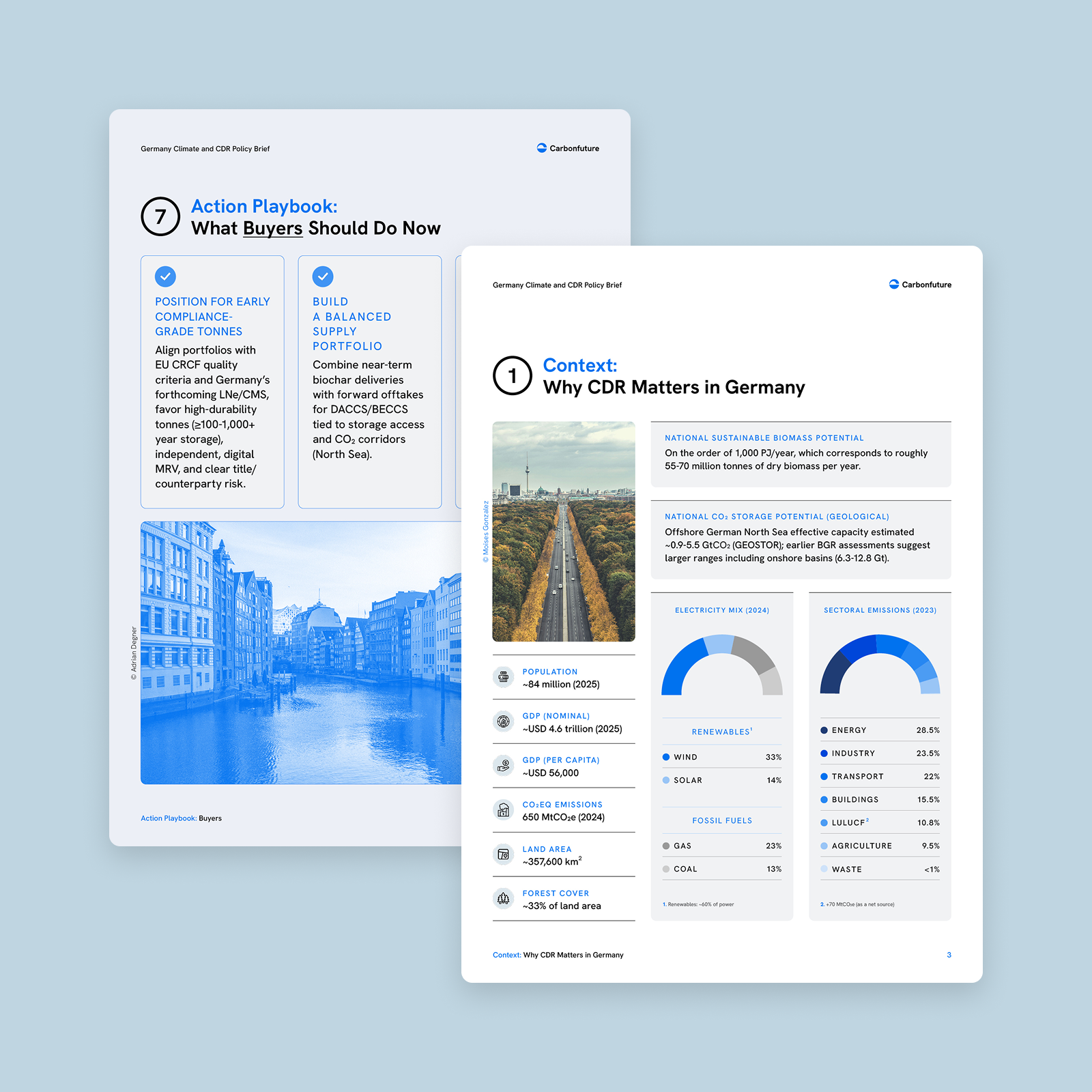Policy Brief

As of 2025, Germany has one of the most advanced climate-governance frameworks in Europe, with a roadmap that lays out an ambitious agenda between today and net-zero in 2045. These include building access to offshore CO2 storage, significant carbon removal funding, and a dedicated CDR department in government – the first of its kind. This brief outlines why Germany is now one of the safest, most investable CDR markets for buyers and suppliers.

With the third-largest economy in the world and a demonstrated commitment to green initiatives, Germany has taken a leadership role in the CDR industry. It boasts the world’s first national CDR association and has a statutory commitment to become climate-neutral by 2045 and net-negative after 2050. For buyers, this government backing and network of existing carbon removal companies make this an exciting market for investment, quality, and development. For suppliers, it provides a level of support that cannot be found in many other countries.